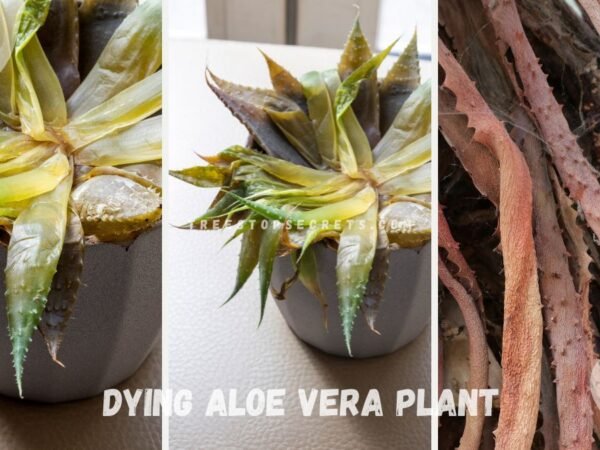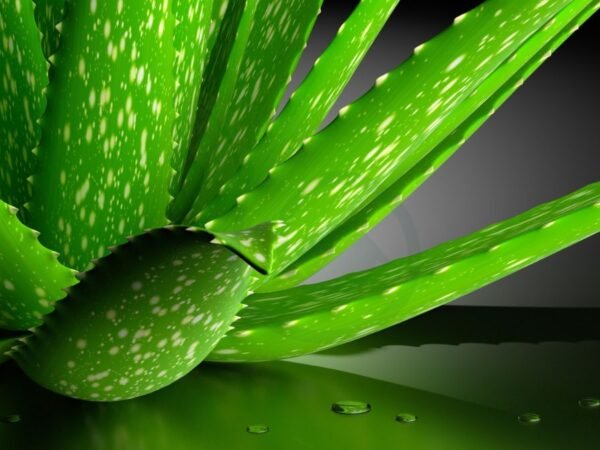Ever wondered how to harness the natural goodness of aloe vera straight from the plant? Looking to unlock the secrets of extracting fresh aloe vera gel effortlessly at home? Imagine having your own supply of this versatile skincare elixir right at your fingertips. Curious about the simple steps that can make this possible with just a few easy techniques?
Discover the step-by-step process to harvest and extract aloe vera gel directly from the plant in this guide. Uncover the benefits and various ways you can use this potent gel for skincare, hair care, and more. Get ready to elevate your self-care routine with this all-natural remedy that's as easy as plucking a leaf.
Key Takeaways
- Harvest aloe leaves properly: Cut mature, healthy leaves close to the base of the plant for the best quality gel extraction.
- Extract gel carefully: Scrape out the gel from the aloe leaf using a spoon or knife, avoiding the yellow sap beneath the skin.
- Homemade aloe vera gel: Blend the extracted gel until smooth and store it in a clean container for various uses.
- Store correctly: Keep aloe vera gel in an airtight container in the refrigerator to maintain its freshness and beneficial properties.
- Apply aloe vera gel: Use the gel topically to soothe sunburns, moisturize skin, or promote healing of minor cuts and burns.
- Enhance benefits: Combine aloe vera gel with other natural ingredients like essential oils or honey for added skincare benefits.
Understanding Aloe Vera
Benefits of Aloe Gel
Aloe vera gel soothes sunburn and skin irritations effectively, providing relief from discomfort and redness. The gel's antioxidants promote skin health by fighting off free radicals that can damage skin cells. Aloe vera gel is excellent for moisturizing and hydrating the skin, keeping it soft and supple.
Selecting Healthy Leaves
When harvesting aloe vera gel from the plant, it is crucial to select leaves that are firm and plump to ensure maximum freshness and efficacy. Avoid leaves with any discoloration or soft spots as these may indicate spoilage or reduced potency. Opt for mature leaves as they contain a higher content of gel, making the extraction process more productive.
Preparing for Extraction
Tools Needed
To extract aloe vera gel from the plant, you will require a few essential tools. Firstly, prepare a sharp knife to carefully cut the leaves of the aloe vera plant. This knife will enable you to cleanly slice through the thick outer layer of the leaves. Ensure you have a bowl ready to collect the extracted gel. This bowl will hold the gel as you separate it from the leaf's inner part. Moreover, keeping a fruit peeler handy can serve as an alternative tool for efficiently removing the tough outer skin of the aloe vera leaf.
Safety Measures
When engaging in the process of extracting aloe vera gel, it is crucial to prioritize safety measures. Exercise caution while using the sharp knife to avoid any accidental cuts or injuries. The blade should be handled carefully to prevent any mishaps during the extraction process. Furthermore, it is advisable to wear gloves while working with the aloe vera plant. These gloves will shield your hands from potential contact with the plant's spines, ensuring your safety throughout the extraction procedure. Lastly, make sure to work on a stable surface when extracting aloe vera gel. By choosing a secure and steady workspace, you can minimize the risk of accidents and maintain control over the extraction process.
Harvesting Aloe Leaves
Proper Cutting Technique
To harvest aloe vera gel from the plant, begin by cutting the leaf at the base to ensure optimal extraction. Make sure to execute a clean, straight cut to prevent any damage to the plant. Before extraction, it is essential to trim off the pointed end of the leaf for a smoother process.
Choosing the Right Leaf
When selecting leaves for harvesting aloe vera gel, prioritize outermost leaves as they contain the freshest gel. Opt for leaves that are at least 8 inches long to ensure a good yield of gel. To identify the best leaves, look for those that are larger and positioned towards the bottom of the plant.
Extracting Aloe Vera Gel
Clean and Slice Leaves
Rinse the leaves thoroughly to get rid of any dirt or debris, ensuring they are clean for extraction. Use a sharp knife to trim the edges of the aloe vera leaves, making them ready for gel removal. Peel off the outer green layer carefully to expose the clear gel inside.
Scoop Out the Gel
Carefully scoop out the gel core from the leaf using a spoon or knife, ensuring precision in extraction. Be cautious to only extract the transparent gel without including any green parts. Collect the extracted gel in a separate container for further processing.
Making Aloe Vera Gel at Home
Blending Gel
To create Aloe Vera gel at home, start by blending the gel in a blender until it reaches a smooth consistency. Carefully monitor the blending process to avoid any lumps or uneven textures that may affect the quality of the gel. Ensure that the gel is blended gently to preserve its beneficial properties.
Straining Process
After blending, proceed to strain the gel to eliminate any remaining impurities and solid particles. Use either a fine mesh strainer or cheesecloth for an effective filtration process. This step is crucial in ensuring that the final Aloe Vera gel is pure and free from any residue that could compromise its quality.
Storing Aloe Vera Gel
Refrigeration Tips
When storing aloe vera gel, place it in a clean glass container to maintain its freshness. Keep the gel away from direct sunlight as exposure can degrade its quality. For optimal preservation, refrigerate the gel promptly to prevent any chances of spoilage.
Long-term Storage Solutions
For long-term storage of aloe vera gel, transfer it into airtight containers to maintain its consistency and potency. Label these containers with the extraction date for easy tracking and organization. To ensure an extended shelf life, store the gel in the refrigerator to retain its beneficial properties.
Using Aloe Vera Gel
Skin Care Applications
Aloe gel is a versatile natural remedy for various skin concerns. Apply aloe gel directly to the skin for hydration and soothing effects. Its moisturizing properties help in nourishing the skin and keeping it healthy. For those battling acne and blemishes, aloe gel serves as an effective solution due to its anti-inflammatory and antibacterial properties. By reducing redness and inflammation, it aids in promoting clearer skin. Furthermore, you can enhance your skincare routine by incorporating aloe gel into DIY recipes for face masks, serums, or lotions. This not only adds a natural touch but also amplifies the benefits of your skincare products.
- Benefits of using aloe gel:
- Hydration and soothing effects
- Natural remedy for acne and blemishes
- Versatile ingredient in DIY skincare recipes
Health Benefits
Apart from skincare, aloe vera offers numerous health benefits when consumed internally. Aloe gel plays a significant role in aiding digestion and promoting gut health. It contains enzymes that support proper digestion and help alleviate digestive issues like bloating or constipation. Consuming aloe vera juice can have remarkable effects on your overall health. The juice acts as an immunity booster by providing essential vitamins like vitamin C and E, along with minerals such as zinc and magnesium. Moreover, regular intake of aloe vera juice helps in detoxifying the body by flushing out toxins and impurities.
- Health benefits of aloe vera:
- Aid in digestion and promote gut health
- Boost immunity and detoxify the body
- Rich in essential vitamins and minerals
Tips and Tricks
Maximizing Gel Yield
Harvest leaves from various parts of the aloe vera plant to obtain a higher gel yield. Extract gel from multiple leaves to gather a sufficient amount for use. Utilize all extracted gel efficiently in skincare, haircare, or medicinal applications.
Avoiding Common Mistakes
Cut leaves sparingly to avoid hindering the plant's ability to regenerate. Rinse the extracted gel thoroughly to eliminate aloe latex residue that can cause skin irritation. Store the gel in non-metal containers to prevent contamination.
Closing Thoughts
You've learned how to extract aloe vera gel from the plant, unlocking its numerous benefits for your skin and health. By following the steps outlined, you can now create your own natural and chemical-free aloe vera gel at home. Remember to store it properly to preserve its potency for longer use. Experiment with various ways to incorporate aloe vera gel into your skincare routine, from soothing sunburns to promoting hair growth.
Take action today by harvesting some aloe leaves and extracting the gel to experience firsthand the wonders of this versatile plant. Share your success stories with others and spread the knowledge of this DIY skincare gem. Embrace the power of nature in your beauty regimen!
Frequently Asked Questions
How do I properly harvest aloe vera leaves for gel extraction?
To harvest aloe vera leaves, choose mature, thick leaves from the outer part of the plant. Use a sharp knife to cut the leaf close to the base. Allow the harvested leaves to drain upright for 15 minutes to let the aloin (yellow sap) drain out.
How can I ensure the aloe vera gel is fresh and safe for use?
To ensure freshness and safety, store aloe vera gel in an airtight container in the refrigerator. Check for any signs of spoilage like discoloration or odor before use. It's recommended to make small batches and use within 1-2 weeks.
Can I use aloe vera gel directly from the plant without extracting it?
Yes, you can use fresh aloe vera gel directly from the plant by cutting open a leaf and scooping out the gel with a spoon. However, extracting the gel allows for better preservation and hygiene if storing for longer periods or making skincare products.
What are some benefits of using homemade aloe vera gel?
Homemade aloe vera gel is free from added chemicals or preservatives, ensuring purity and natural benefits for your skin. It's cost-effective, customizable with additional ingredients like essential oils, and can be tailored to suit individual preferences and needs.
Are there any precautions to consider when using aloe vera gel topically?
While generally safe, perform a patch test on a small area of skin before widespread application to check for allergies or sensitivities. Avoid ingesting aloe vera gel as it may cause digestive issues. Consult with a healthcare provider if you have specific health concerns or conditions.
Image Source: Paid image from CANVA





